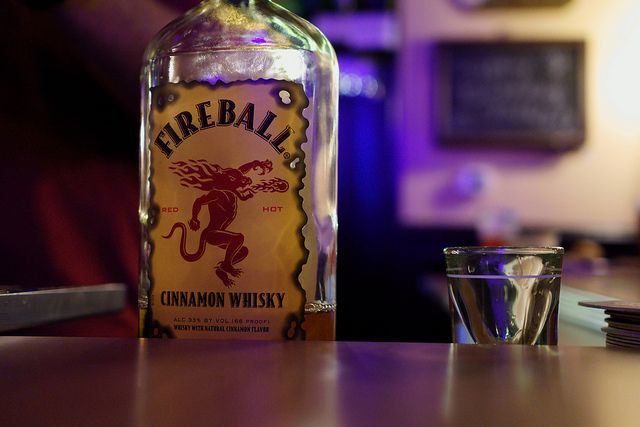Over Antifreeze Levels, Fireball Whiskey Recalled In Multiple European Countries

Even though the evidence is stacked against them, some headstrong alcohol lovers insist that drinking makes them feel warmer — as if there’s antifreeze in their whiskey, or something. Well, actually there is. It’s just not the kind you’re used to.
The antifreeze is called propylene glycol, and manufacturers use it to preserve moisture in their products, prevent against leakages, thicken certain foods like salad dressing and ice cream, and (apparently) sweeten your Fireball whiskey. In Europe, however, countries have recently recalled the brand because American formulas of Fireball contain more propylene glycol than is allowed by European standards.
“It appears that we shipped our North American formula to Europe and found that one ingredient is out of compliance with European regulations,” a Fireball spokeswoman told The Daily Beast in an email. “Finland, Sweden, and Norway have asked to recall those specific batches, which is what we are doing.”
The Food and Drug Administration categorizes propylene glycol as a “generally recognized as safe” ingredient. As such, it can appear in food and beverages in quantities up to 50 grams per kilogram. Fireball’s whiskey has less than an eighth this amount when produced in America and as little as 1 gram per kilogram when it’s made in Europe. Thousands of everyday products, from cosmetic goods to pharmaceuticals to food and beverage, have used the ingredient for more than half a century.
The real culprit, which isn’t found in a laundry list of goods, including Fireball, is propylene glycol’s cousin, ethylene glycol. That’s what goes into your car in the winter. If you were to ingest it somehow, you’d likely succumb to the effects of poisoning within minutes. These effects include vomiting, hyperventilation, cardiovascular dysfunction, and kidney failure. Ethylene glycol has a faintly sweet taste, so in an effort to dissuade kids and animals from drinking it many manufacturers have turned to a chemical called denatonium benzoate to add a bitter flavor.
In order for propylene glycol to become toxic, people would need to consume inordinate amounts of the stuff. The Centers for Disease Control and Prevention doesn’t offer a specific number but does point out that concentrations can range from less than 0.001 percent in eggs and soups to 15 percent in some seasonings and flavorings. The largest amounts of propylene glycol are used in the textile industry to make polyester. Normal exposure is nontoxic.
Indeed, there’s a far greater chance you’ll succumb to alcohol poisoning by downing shots of Fireball before you ever feel the toxic effects of propylene glycol. Or you might get straight up sick, like if you happened to pass around an entire bottle of Fireball at, say, someone’s wedding, sort of like these people did.



























